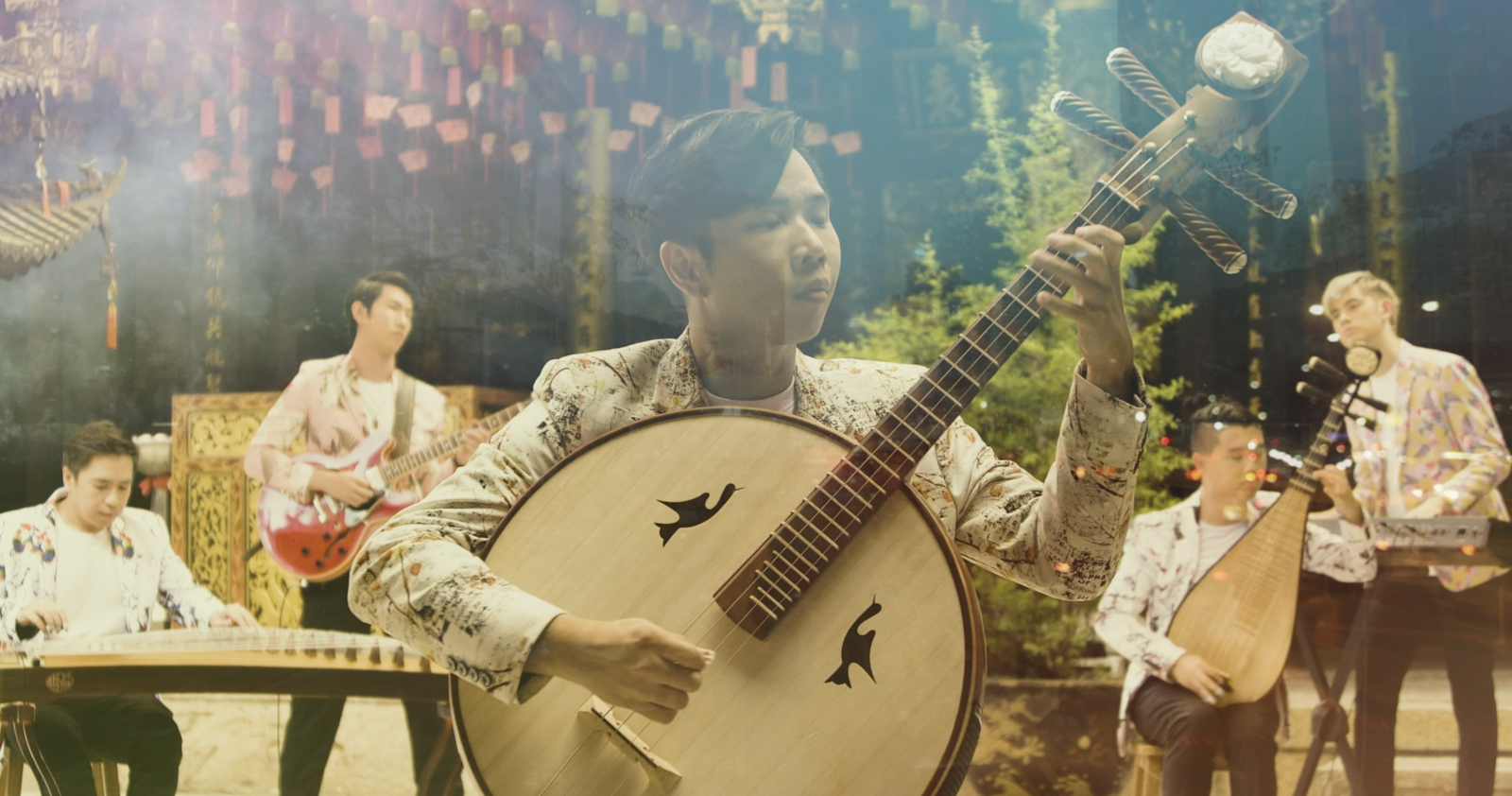Much of the conversation surrounding the plight of migrant workers has focused on how to provide them with better living conditions — but less has been said about their mental health. And with little more than a beat-up mobile phone to keep in touch with their families and stay occupied, these migrant workers are sure to need some help on that front.
Enter The Teng Ensemble. Earlier this month, the local music company produced a series of songs to lift their spirits, and pay tribute to the generations of migrant workers who’ve helped shape Singapore. Thedicho the first song to be released, featured the vocals and a heartfelt opening message — all in Tamil — from local singer Shabir Tabare Alam, set against a backdrop of stirring Chinese chamber music.
“Music has the ability to surpass language and cultural boundaries,” says The Teng Ensemble’s Creative Director, Dr Samuel Wong.

(Image: Shabir)
“Working with Shabir was quite easy musically, because I think we all spoke the language of music,” he continues. “But it was dealing with the nuances of Tamil language and its prose that proved a bit tricky for us. We had to make sure the meanings of Shabir’s singing was aligned with our musical interpretations.”
The Teng Ensemble would know a thing or two about merging genres. Though the Ensemble specialises in classical Chinese instruments — think erhu, guzheng, pipa amongst several other Eastern and Western instruments — they’ve become genre-bending experts since their inception in 2004.
Pop-music mashups like Bruno Mars medleys, covers of movie themes (like the one from Harry Potter), and collaborations like their new Triptych Series — they’re all par for the course for The Teng Ensemble, who want to use their know-how to do some good.
“We’re known for how we bridge the traditional and contemporary, the East and West, and the old and new, all while using classical Chinese instruments,” says Executive Director Yang Ji Wei. “And as an arts company, we wanted to support our migrant community in the way we know best — by leveraging our craft.”
Thedichoru draws inspiration from a poem of the same name by Tamil writer Mahakavi Bharathiyar. “I believe many of you would know this poem’s meaning,” says Shabir in the prelude of the song, which, drawing lines from the original poem, encourages the listener to rise above their hardships.
The second song in the Triptych Series switches tack and travels a few decades back in time. Xin Zao Beh bases itself on classic Hokkien Nanyin music, commemorating the contribution of Chinese migrants to Singapore through the decades.

(Image: The Teng Ensemble)
For extra poignancy, the pre-circuit breaker music video was filmed at Singapore’s oldest Hokkien temple, Thain Hock Keng — which was built with the help of the local Indian community in the past.
As Yang puts it: “It’s a testament of various people coming together as one, to contribute to the success of our country.”
The final song in the Triptych Series is another collaboration that features not just Shabir, but a myriad of actual foreign workers in Singapore. From a senior staff nurse from Myanmar who’s been in Singapore since she was 16 to construction workers from Bangladesh, Childhood gives these figures a voice as they speak about their hopes and fears.
“By sharing stories of migrants in our society, we want to remember our forefathers, who likewise made similar contributions and toiled for Singapore’s success,” says Yang.
It’s not the first time that the ensemble has used their music for good. Their charitable arm, Teng Gives Back, often visits dialysis centres, hospitals and hospices to bring infirm patients some joy with their classic instruments.
For the Ensemble, collaborations and outreach programmes like these aren’t just about wanting to keep their craft alive and relevant. They want to help lend a voice — and a song — to communities in Singapore who need it.
Says Yang: “As descendants of migrants ourselves, we hope that Singaporeans will come to know that we’re more similar than different, and that our society should stand together as one during times like these.”
